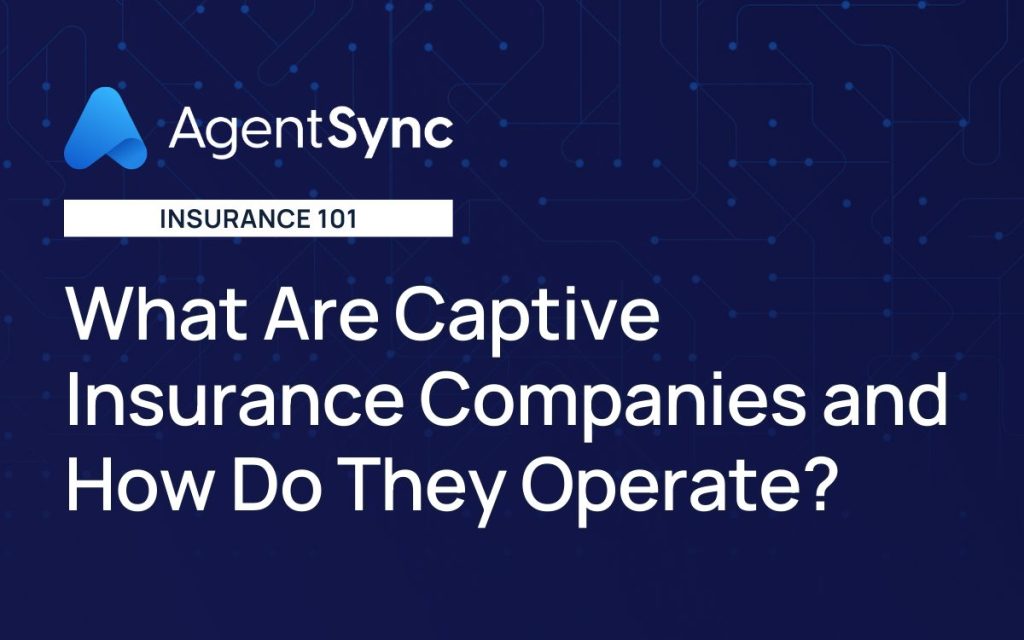Insurance 101: What Are Captive Insurance Companies and How Do They Operate?

From rental cars to groceries to Netflix subscriptions, it seems nothing is safe from price increases these days – including insurance. There’s no denying that, over the last several years, it’s become increasingly more expensive for individuals and organizations to protect themselves from risk.
Concerns over more frequent and severe climate-related disasters, supply chain disruptions, and inflation are lessening insurers’ appetite for risk leading to higher premiums and more limited coverage options. These hard market conditions have policyholders searching for alternative options for mitigating their risk at a price they can afford. Organizations looking for unique coverage or a solution to reduce their insurance spend might consider forming a captive insurance company.
What is a captive insurance company?
Captive insurance companies are subsidiaries formed to provide insurance to their non-insurance parent organization. These groups are owned wholly by a parent company (or companies) and provide the organization a form of self-insurance. Rather than purchasing insurance through a carrier, companies form captives to take on their own underwriting and risk management.
You may hear captive insurance companies referred to in a few different ways. Captive insurers, captive insurance groups, and group captive insurance are a few other common names for the same thing. For the sake of simplicity and consistency, we’ll most often call them captives.
History of captive insurance
While insurance history buffs speculate that the earliest use of captives dates back to 19th century ship owners, this insurance model truly started to take off in 1953 thanks to a man named Frederic Reiss. Reiss, now credited as the father of captive insurance, formed what is believed to be the first modern-day captive insurance company.
At the time, U.S. regulations made it far too expensive to form and operate captives within the country, so Reiss went offshore to Bermuda to get the ball rolling. By the late ‘70s, Bermuda became the first country to introduce comprehensive legislation and standardized licensing and procedures for captive insurance, and by the end of the ‘80s over 1,000 captives were in operation, a majority of which were outside of the U.S.
However, there was one state that was quick to join the captive insurance trend. Vermont was the first state to promote its captive insurance statutes and regularly boasts the fact that it has the largest captive insurance market in the U.S. and third largest in the world. Overall, captive insurance has become a popular choice among larger corporations, with approximately 90 percent of Fortune 500 companies owning captive subsidiaries. And, with the development of group captives, it is now a much more accessible model for mid-size companies, as well.
What are the different types of captives?
Captive insurance is not one size fits all. A company can choose from a variety of different captive models to fit its specific structure and needs. While this list is in no means exhaustive, here are a few common captive classifications:
Pure captive – Also called single-parent, pure captives are wholly owned by the single company that they insure. Pure captives are typically a common choice for large companies that need coverage for multiple different and unique risks.
Group captive – This type of captive is made up of several businesses that join together to obtain coverage beyond what is available through traditional carriers. Group captives are popular among small and mid-size companies and come in a variety of forms.
Rental captive – Rental captives allow organizations to gain the benefits of captive insurance without the costs associated with forming and managing one on their own. In this arrangement, a captive insurer “rents” its services to an outside organization in return for a fee.
Association captive – This type of captive is similar to a group captive in that it is owned by a number of companies. However, rather than just being in the same industry, the companies are all members of the same association.
Advantages of captive insurance companies
There’s a reason captive insurance has seen steady growth since it was first introduced. Forming a captive provides companies with several benefits.
Helps meet unique risk management needs
One of the greatest advantages of captive insurance is that it offers companies the ability to tailor their coverage to fit their unique needs. Traditional insurance is designed for the “average” individual or company and therefore tends to be more generalized.
Some companies need their coverage to include hard-to-insure or emerging risks like environmental or cyber liability. Traditional insurance for these risks may be unreasonably priced or even unavailable due to current hard market conditions. Forming a captive allows companies to dictate their own coverage and ensure it’s best suited to their specific needs.
Provides significant tax advantages
Captive insurance models also provide attractive tax-planning opportunities, which can aid in the parent company’s profitability. For example, a parent company can deduct the premium it pays to a captive as an insurance expense as long as the captive can prove it’s a valid insurance company. Captives can also provide gift and estate tax savings for shareholders, as well as income tax savings for both the parent company and the captive.
Reduces company costs
Forming a captive offers companies a few cost-saving advantages. Traditional insurance companies build profit into the cost of their premiums. With captive insurance, a company avoids any additional costs built into their rates, like the administrative and marketing costs commonly included in traditional premiums. Captives also benefit from other cost savings such as the elimination of commission fees and lower operating costs.
What types of risk do captives insure against?
Captives are used to insure a wide range of risks depending on the parent company’s specific needs. While most organizations form captives to fund their own risks, there has been an increase in the use of captives to write third-party risk like employee benefits, supply chain, and extended warranties.
Practically every risk covered by a traditional insurance carrier can also be covered by a captive. However, the lines of authority a captive is able to offer do vary by state. For example, in Connecticut captives are free to insure against any type of loss including life, health, commercial, and annuities, while Arizona prohibits captives from providing certain coverage such as workers’ compensation or employee liability insurance.
Captive insurance regulation
Once formed, captives operate similar to traditional commercial insurance carriers. They are regulated by the states and subject to annual reports and capital reserve requirements, although reserves are typically smaller for captives than for traditional insurance companies.
However, a key difference in audience makes captive insurance regulation a little different. Because captives aren’t insuring the general public, regulation for these entities is typically less concerned with things like policy forms, rates, claims personnel, and distribution systems. Instead, it focuses more on the state of finances and management competence.
Do you need a license for captive insurance?
In short, yes. Generally, it is illegal for any insurer to issue policies without a valid license. Captive insurers are unlicensed and nonadmitted except in their own domicile, so they still need their coverage written by a licensed insurer to remain in compliance with state regulations and financial responsibility laws.
This is done through a fronting company. A fronting company is a licensed insurer that can issue insurance policies on behalf of the captive without assuming the risk of the captive. Fronting agreements are used as evidence that a captive’s coverage is written by a licensed, admitted insurer without the captive needing to maintain licenses in each state it writes business in.
Captive insurance as a viable alternative to traditional insurance
Insurance is a considerable expense for many organizations and, with rates on the rise, it’s likely to stay that way. With captive insurance, companies can obtain the coverage they need without the additional costs often associated with traditional insurance policies. If a business is looking to save money or searching for suitable coverage for its unique risks, forming a captive insurance company could be a solution.
Whether you operate a traditional insurance carrier or go the captive route, AgentSync is here to help take the complexity out of your compliance management.

